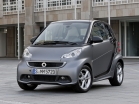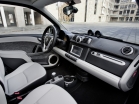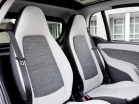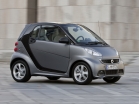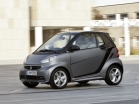SMART FORTWO test drive since 2012 coupe
Short against Little: Smart Fortwo and Toyota IQ in comparison
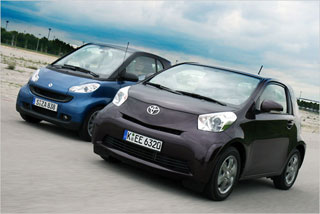 Rear-wheel drive with semiautomatic against front drive with variator
Rear-wheel drive with semiautomatic against front drive with variator Take a look at the consolidated table of characteristics, and you practically define the difference in the length of our dough participants. The title of close parking king still belongs to Smart Fortwo, however, the Toyota IQ of a 2.99 meter long literally comes to his heels, lagging behind only 30 centimeters. In addition, the Japanene is ready to offer landing places for four people, at least formally. Is it really a baby from the Far East to overthrow from the throne of the aged representative of Lorraine?
Engine and transmission
For comparison, we chose the IQ version with a 68-strong liter gasoline engine, and the Fortwo model is equipped with a 71-strong liter engine. Both aggregates have not only practically the same power and working volume. They both have three cylinders, and the torque they give almost the same. When starting from the place of the IQ, the failure is observed in the pull, but with a slightly higher revolutions it is more coming more than SMART. In addition, at idle turns, the three-cylinder Toyota engine makes a significant vibration, SMART is almost not sinful. But during the SMART ride is much more noise.
Semi-automatic against variator
How strongly tested cars are similar to engines, as much as they differ in the concepts of the drive and transmissions. Smart'a has rear-wheel drive, at Toyota, on the contrary, front. In addition, Fortwo has an automated transmission, which in this Passion configuration has manual and automatic modes, as well as steering gear gear petals. Due to this, Smart'a has a pause with each transmission. Our IQ is equipped with an option in the form of a stepless automatic variator, and it is much more comfortable to go with it. True, there is no way to manually choose the transfer.
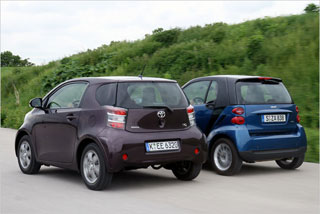 Same flow
Same flow Fortwo 1.0 MHD provides a stop-start system for all complete sets, IQ is such a function only for IQ + version. And although Toyota is larger in size, with a mechanical gearbox IQ consumes a 0.1 liter of fuel less than SMART: according to the factory characteristics, consumption is 4.3 liters per 100 kilometers. Both cars belong to the most economical gasoline machines on the market. IQ with the variator consumes as much as 4.7 liters. In practice, SMART showed consumption of 6.0 liters, and IQ at 7.5 liters. Both motor correspond only to Euro-4 standards.
Low maximum speed
Our smallts are not created for autobahn, and regarding maximum speed need to be amended: according to the characteristics, SMART accelerates to 145 km / h, and the limit for IQ is 150 km / h. We managed to overclock SMART to 150 km / h, and the IQ speedometer showed even 165 km / h.
Chassis and management
In addition to the relatively low maximum speed, the suitability of our cars for the auto reduces the design and settings of the chassis. Around the speed of 120 km / h in Smart'e becomes scary, while IQ retains stability. The same applies to turns: if you go too fast in turn, then get out of it easier to IQ. When Smart already squeezes the tires and the ESP indicator lights up, IQ at the same speed does not occur any problems. Fortunately, both cars have an electronic system of protection against driving, and in fact, to this day, such an assistant is established far from all small trains. But the power steering is serial equipment only for IQ. And on the straight section, Toyota is also more pleasant. Since Smart jumps on the bumps, he has a much stringent suspension than IQ, which is easily rolling over the cracks, furrows and pores of the roadbed. It should be added to this that when braking and automatic transmission change, Smart almost always freezes, which further enhances the manifestation of the interruption mentioned above in the thrust. By the way, about braking: Smart'a, unlike IQ, there is only a drum brake behind.
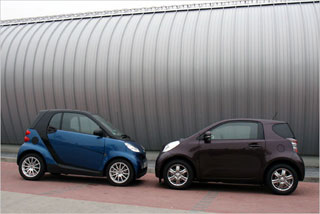 Body and Salon
Body and Salon As mentioned earlier, having a length of 2.99 meters, IQ is almost 30 centimeters longer than Smart. But on the wheelbase, the difference is only 13 centimeters. However, Toyota formally has four seats, while Smart can offer only two. And yet the seat, located behind the driver's seat IQ, is completely not suitable for an adult passenger, and even a child placed there only under the condition that the driver has small dimensions. But in the back seat behind the passenger seat, the place for the legs is enough, since at the expense of the asymmetric dashboard, the front seat can be more advanced forward. Places above your head for adults in the back seat is very small, but with a large desire, IQ can be called a car with a seat 3 + 1.
Little luggage scene
As you should expect, in both cars for baggage a little. But IQ in this regard still arranged somewhat better. Of course, in a quadruple version, the luggage does not fit at all, but the rear seats can be folded. Thus, a flat, suitable surface, which can accommodate 395 liters of luggage, if you use space to ceiling. Of course, this is not much, because even in Fiat 500 after folding seats, more than 600 liters are fitted. But Smart's ability is even less - only 340 liters. Even if in Smart fold the passenger's seat, the IQ climbs more.
Frontal crash test IQ
The subject of safety at the accident is especially important in the case of cars that do not have a large protective surface of the body. Here Toyota turns out to be ahead, having received five stars on the EURO-NCAP crash test, and Smart'y had to be content only four. Passive security is presented in Smart with two serial safety pillows, but IQ have them whole nine: in addition to the front pillows, side front and heads, there are two more airbags for knees, as well as rear airbags, which have become a global premiere and intended for Protection of passengers from behind.
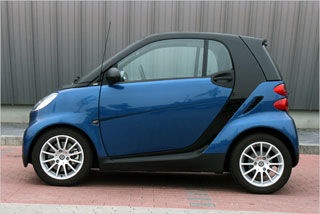 Good Materials in Smart'e
Good Materials in Smart'e Salon liked us more from Fortwo. Instead of rigid plastic, the toolbar is covered with an extraordinary and convincing solution with an appropriate fabric. But the speedometer dial looks somewhat cold. Materials and coloring IQ disappointed us. But the seats from the Japanese is definitely better. Proper lateral support, they also do not provide, but they are softer and more convenient than the hard buckets of Smart.
Equipment and price
When SMART appeared in 1998, many complained about its high cost at 16,480 German brands (8,426 euros) for the same money at one time you could buy Fiat Seicento or Ford Ka. And today's price of 9,990 euros looks immodestly, if compared with Dacia Sandero and other budget cars with four full seats. And our model Smart'a with a capacity of 71 hp And in the most expensive package, Passion is generally sold at a price of 12,700 euros. The same Toyota asks for IQ 1.0 with a manual box. For a model with a variator will have to pay at least 13,900 euros. Is such a nearly 10% surcharge in price, decides each for itself, we would easily refuse options. If the options are classified and the variator, the IQ is 1,200 euros more expensive than Smart.
iQ is better equipped
Overall, Toyota provides a better complete set. Like SMART, IQ is equipped with a central lock with remote control, power windows with an electric drive, air conditioning and 15-inch wheels with aluminum discs are not bad for the smallest car. In addition, IQ has, as already mentioned, nine airbags, not two. In addition, the Japanese has an electronic adjustment system and heating the rearview mirrors, for which 160 euros would have to pay for Smart'a. In addition, the standard set of IQ equipment includes a radio receiver with a CD player, and SMART has a paid option. For its part, Fortwo can only boast the anti-totted system, which IQ does not have.
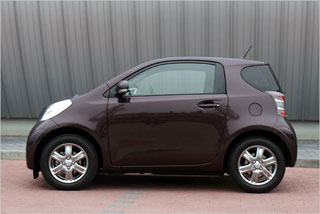 Grade
Grade In the category, the engine and transmission wins IQ mainly because the semi-automatic Smart'a is too annoying. Motors from candidates for characteristics are approximately the same. In terms of Toyota suspension turns out to be more stable and comfortable. When comparing the body, the same picture: in IQ more space, and it is better running the EURO-NCAP crash test. What is the price? Finally, IQ with the best complete set costs as much as SMART. We would not order an expensive variator for the Japanese. As a result, IQ won a confident victory. In this, we also convinced an excellent level of comfort when moving, noise insulation and convenient gear shifting, as well as large capacity.
Smart Fortwo. 4 points out of 5
Pros: Cheaper than IQ with a variator
Cons: noise, crash, annoying interruptions
Toyota IQ. 4.5 points out of 5
Pros: a much higher level of comfort, more spacious salon
Cons: Dear variator
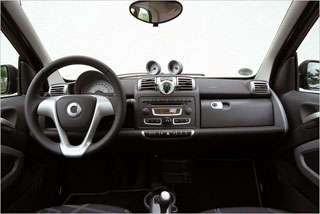
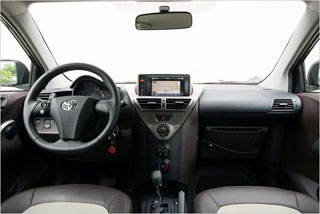
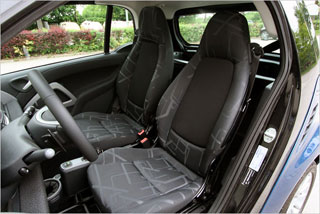
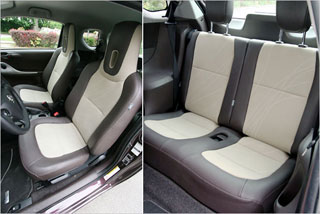
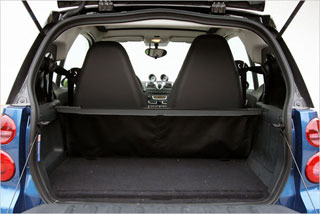
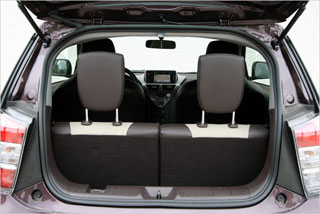
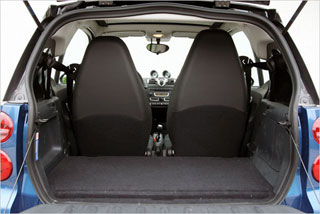
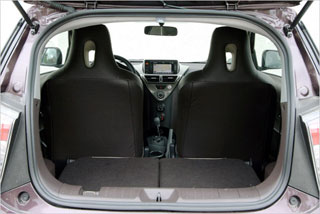
Specifications
Smart Fortwo 1.0 MHD Toyota IQ 1.0 CVT
Engine and drive
Type of motor atmospheric gasoline atmospheric gasoline
Number of cylinders 3 3
Number of valves per cylinder 4 4
Working volume in cc.mm 999 998
Power in hp 71 68.
Power in kW 52 50
at rpm 5 800 6 000
Torque in nm 92 91
at rpm 4 500 4 800
Rear front drive
Transmission Automated 5-speed box with manual mode Variator
Chassis
Front wheels, tires 15-inch alloy wheels, tires 155/60 R15 15-inch alloy wheels, tires 175/65 R15
Rear wheels, tires 15-inch alloy wheels, tires 175/55 R15 are the same as in front
Sizes and masses
Length in mm 2 695 2 985
Width in mm 1 559 1 680
Height in mm 1 542 1 500
Wheel base in mm 1 867 2 000
Own weight in kg 825 860
Permissible load in kg 195 350
The volume of the luggage compartment in liters 220 238
Adjustable luggage compartment volume in liters 340 395
The volume of gas tank in liters 33 32
Speed \u200b\u200bCharacteristics and Consumption
Maximum speed in km / h 145 150
Acceleration 0-100 km / h 13.3 No data
Middle consumption in l / 100 km 4.4 4.7
Consumption in the city in l / 100 km 5.2 5.7
Consumption outside the city in l / 100 km 3.9 4.1
CO2 emissions in g / km 104 110
EURO-Four EURO-4 Emission Classification
Rates
Smart Fortwo 1.0 MHD Passion Toyota IQ 1.0 CVT
Basic cost 12 700 13 900
Euro Euro currency
ABS + +.
ESP + +.
Driver airbag + +
Passenger Airbag + +
Side Pillows in front 290 +
Power windows + +
Electronic adjustment of rear-type mirrors 190 +
Air conditioning - +.
Climate control + - -
Central locking with remote control + +
Radio with CD Player 450 (including MP3) + (including MP3)
Metallic color 290 400
Alloy wheels + (15 inches) + (15 inches)
Leather interior decoration 475 800
Fog lights 190 -
A source: heise Autos.

